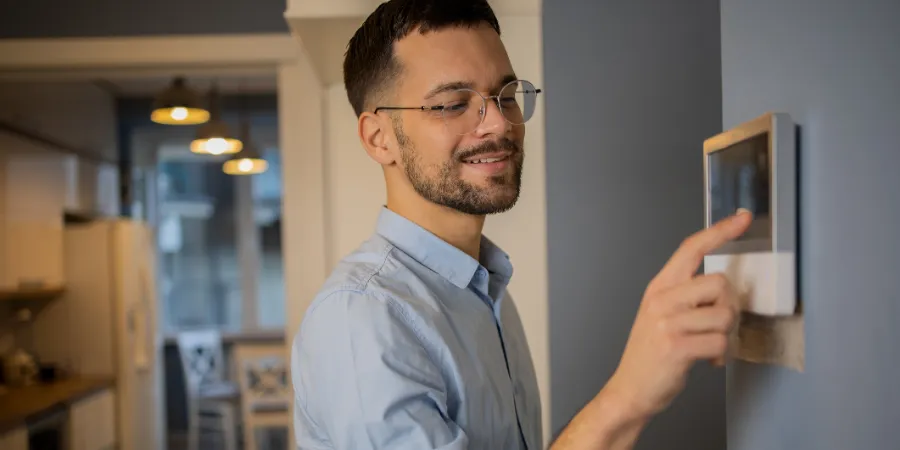Your DIY Spring Short List Includes Testing Your Thermostat
 After a very cold and stormy winter, we are all ready to see the sun, open the windows and enjoy the warm temperatures. Early Spring is an odd time of year to start outdoor projects, but a little too late to care about whether you should invest in a new heating unit.
After a very cold and stormy winter, we are all ready to see the sun, open the windows and enjoy the warm temperatures. Early Spring is an odd time of year to start outdoor projects, but a little too late to care about whether you should invest in a new heating unit.
If you aren’t ready to tackle the big jobs, we have a short list of projects you can do to prepare your Mount Pleasant for warmer months and take care of issues that will save energy all year long.
Start With Your Programmable Thermostat
While you might not think of a thermostat as part of your home’s energy efficient strategy, it can pay the same sort of dividends as air sealing and insulation. Replace your old manual thermostat with one for which energy-saving temperature changes can be programmed to fit your daily and weekly schedules.
Next Are Your Windows
If your home is leaking air or letting it infiltrate indoors, your windows may be the prime culprit. This can be a problem in all seasons, since heat gain in the summer can waste as much energy as heat loss in winter. You can’t provide efficient and affordable cooling and heating if your HVAC system is always working overtime to make up for energy loss through leaky windows.
Your window-sealing project should start with a caulk gun. Apply caulk along the outside edges of window casings, then put glazing compound along the edges of windowpanes, though first clean off any old glazing. The glaze should be applied where the glass fits into the window frame. You can add plastic window film for an extra layer of insulation and air sealing if your home isn’t equipped with storm windows.
Now For Your Doors
Doors that access the outside can also be a significant source of energy loss. As a good first step, buy some weatherstripping at the nearest hardware or home improvement store. Make sure it’s the right size and type. Strip off old weatherstripping and clean and dry the area before applying new material. Start your weatherstripping project at the back of the house, so if you make a few mistakes it won’t be so obvious. As you work toward the front, you’ll get better at this.
If there’s any space under the door, install a door sweep to close up that area. They come in different types, with rubber and vinyl the most common. Use caulk to seal cracks or gaps around doors where weatherstripping isn’t appropriate, such as the door casing.
Family Friendly Inspection
To perform a more complete job of air sealing, you’ll want to seal leaks from both outside and inside the house. From the outside, look for likely spots for gaps and openings. These include the places where plumbing, vents and electrical wiring are routed through walls; chimneys or stovepipe penetrations; and places where building materials meet and have separated or weren’t sealed properly in the first place. Use caulk to seal the smaller gaps and expanding foam to seal larger holes.
Now go inside and continue your weatherization project. One neat trick is to take a lighted incense stick and walk along the interior of your home, holding the stick to areas where air leaks are common. This can include spots of utility penetrations, windows or doors, electrical outlets and recessed lighting. The smoke from the incense stick should waver when you move it past an air leak. For most indoor leaks, caulk is the answer.
Investigate and Insulate
Undertaking a complete insulation upgrade in a home is a job for a trained professional, though you can do some basic insulation inspection on your own. In most homes, the attic is the main source of heat gain or loss, and luckily, it’s probably the easiest place to add insulation. For example, if your existing insulation doesn’t rise to the top of the floor joists, add more on top. While you’re at it, take some time to air seal and insulate the floor and hatch that separate your living spaces from the attic.
Learn more about programmable thermostats or easy DIY insulation options from the home comfort experts at Wood Air Conditioning & Plumbing or contact us at 903-285-6550 to schedule an appointment.
